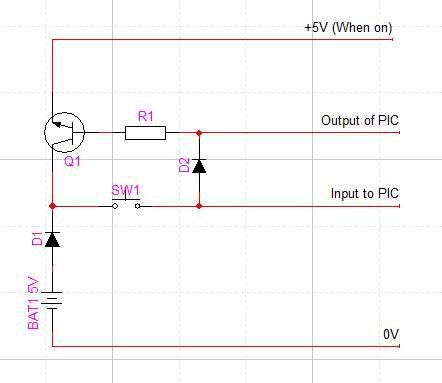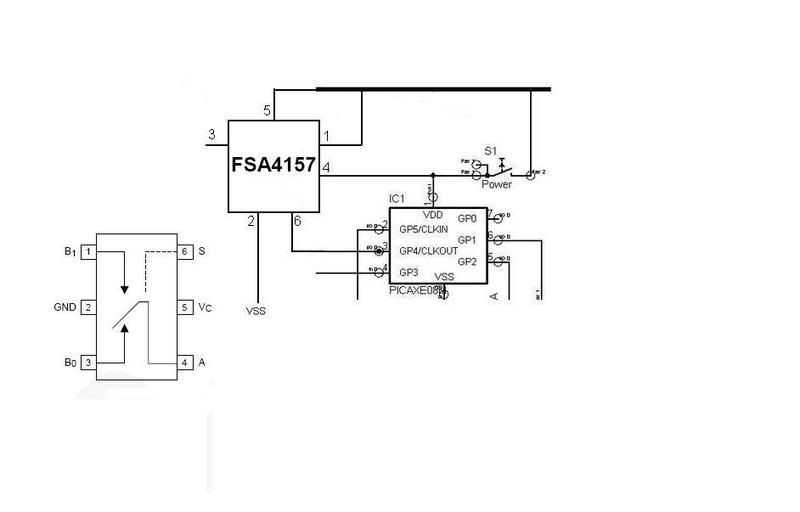Would this kinda of idea work? i know i might need another resistor here and there, and not too such about the resistance of the 1 ive put in.

Basically, you press the PTM button, which turns on the transistor, effectivly turning the circuit on. As long as the output pin connected to the transistor is high, then the circuit stays on. Another press of the button, or other kind of trigger, the output goes low, turning everything off - saving battery life.
Im sort of new to picaxeing, but havent seen this mentioned anywhere in the reseach ive looked at. Wondered whether it would work.
Wob_b

Basically, you press the PTM button, which turns on the transistor, effectivly turning the circuit on. As long as the output pin connected to the transistor is high, then the circuit stays on. Another press of the button, or other kind of trigger, the output goes low, turning everything off - saving battery life.
Im sort of new to picaxeing, but havent seen this mentioned anywhere in the reseach ive looked at. Wondered whether it would work.
Wob_b

